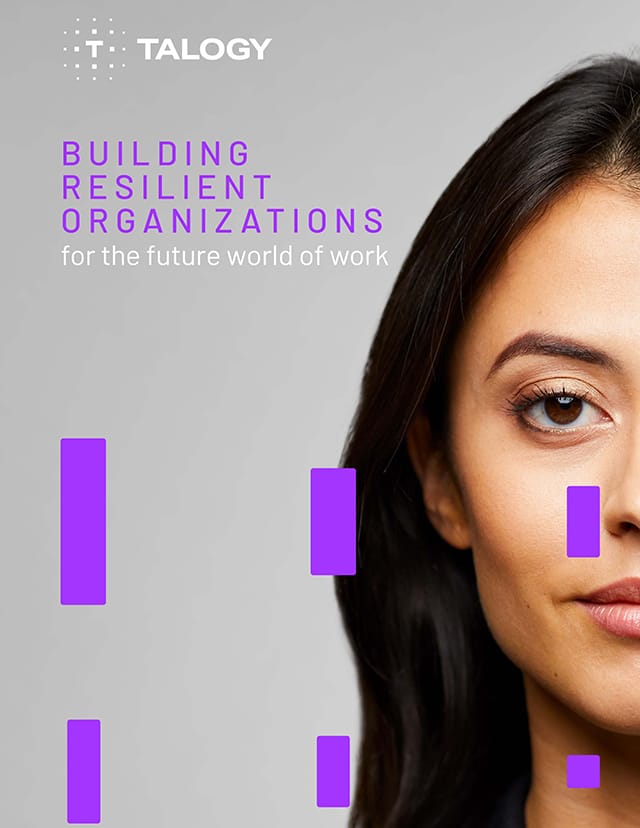Written by Bekah Regan, Consultant
When you think of the “best place to work”, where comes to mind? For many of us, I would imagine Google surfaces rather quickly. We start picturing ergonomic lounge chairs, gourmet lunches, on-site laundry, and other conveniences. It must be so easy for them to attract and retain top talent, right? I mean really, who wouldn’t want to work there?
What we often overlook is that Google wasn’t always that way – there was a time when Google was young, when the company didn’t have the incredible resources it has now. In his book Work Rules!, Laszlo Bock (head of Google’s People Operations) reminds us that, “Fun is an outcome of who we [Google] are, rather than the defining characteristic.” The novelty of perks, prizes, and tangible rewards wear off rather quickly. What attracts candidates and sustains employee loyalty is the shared experiences, energy, and atmosphere of your company. It’s the passion, not the perks, that culture is built upon.
So how do you develop a buzz-worthy culture, oozing with “Top Places to Work” potential? According to Laszlo, there are three essential building blocks: Mission, Transparency, and Voice—and all can be accomplished on a very small budget.
Mission
When the organisation’s mission is tied to a business goal, it becomes achievable. But as Laszlo points out, when your mission is tied to business goals (think: market share, profits, customer satisfaction), you may eventually accomplish them… and then what? On the other hand, if the mission has moral motivations, there is no “end”. The organisation’s mission becomes a journey, rather than a destination. And there’s a lot of power in that sort of purpose! By linking employees’ work back to a greater mission, you help them see the significance and impact of their work on a grander scale; something they can consistently strive for no matter their level in the organisation.
As an example, Google’s mission statement is “to organise the world’s information and make it universally accessible and useful”. It’s simple, unachievable in the good sense, and assumes its own value (no “in order to’s” here).
How does that compare to your organisation’s mission? Is your mission impossible to achieve? Does it motivate individuals to find meaning in their work, or perhaps encourage them to define new goals and innovative ways to carry out that mission, regardless of their actual position? If not, it might be time to review it.
Transparency
Laszlo describes Google as “default to open”. This can be a bit contrary to the way companies typically operate; our tendency is to start by deciding what to share with employees. Our underlying belief here is: information needs to be protected from employees. Instead, if our default is to share all and from there restrict only what’s absolutely necessary, we operate under a fundamentally different belief: employees are trustworthy and have good judgement. This type of transparency has three major benefits:
- Building trust
- Reducing redundancy across teams
- Encouraging and soliciting feedback on new products, solutions, and directions
This culture of openness removes the need for employees to speculate and assume; it squashes the fear that comes with the unknown. At the same time, it fosters a collaborative culture where people have the opportunity to learn from and challenge each other.
Voice
As you increase transparency, you also have to give employees a voice; the power and the platform to suggest and then act on changes which better the organisation. After all, the point of transparency is not for transparency’s sake – it’s to give people a sense of ownership in sustaining the organisation’s culture and, ultimately, a stake in the organisation’s success. It may sound scary, but the goal is to give employees a real say in how the company is run.
These don’t always need to be formally organised (à la town-hall style meetings or surveys). Sometimes all you need are environments where employees can break away from their desks (organically!) to share reactions, spark creativity, and propose improvements. Laszlo shares a few simple ways that Google encourages and supports these “casual collisions” among employees:
- Provide Space – Go beyond the proverbial water cooler (e.g., mini kitchens, a few lounge chairs, other shared/open areas) to encourage unplanned conversations. These areas give individuals from different work teams a place to share their “outsider” perspectives which may produce better ideas than the group-think happening within teams.
- Be Connectors – Create a sense of community that goes beyond the workplace. Google has community boards, where individuals can post flyers about interest groups, volunteer opportunities, and other happenings. Participating in these activities outside of work help us feel more connected to (or at least understanding of) our colleagues – in turn, helping us cooperate with, and challenge, each other.
- Create a Taskforce – Actually, let someone else! Laszlo describes “Bureaucracy Busters,” an annual program launched at Google where employees “identify their biggest frustrations and help fix them”. This empowers those on the front line of an issue (the experts) to generate and evaluate practical solutions. Then, importantly, leaders can support the implementation of those improvements and efficiencies.
“If you give people freedom, they will surprise, delight and amaze you. They will also sometimes disappoint you, but if we were perfect, we wouldn’t be human.”
Developing mission, transparency, and voice will not look the same in every industry or company. But I challenge you to think of ways this could work for your team, department, and organisation, instead of ways it won’t work. Undoubtedly, there will be hiccups along the way and some things may not go as planned (Laszlo dedicates a full chapter in his book to mistakes and unfavourable outcomes), but energy spent defining a positive, robust organisational culture will certainly be worth it – for current employees who are persuaded to stick around, and those you’ve yet to meet.



